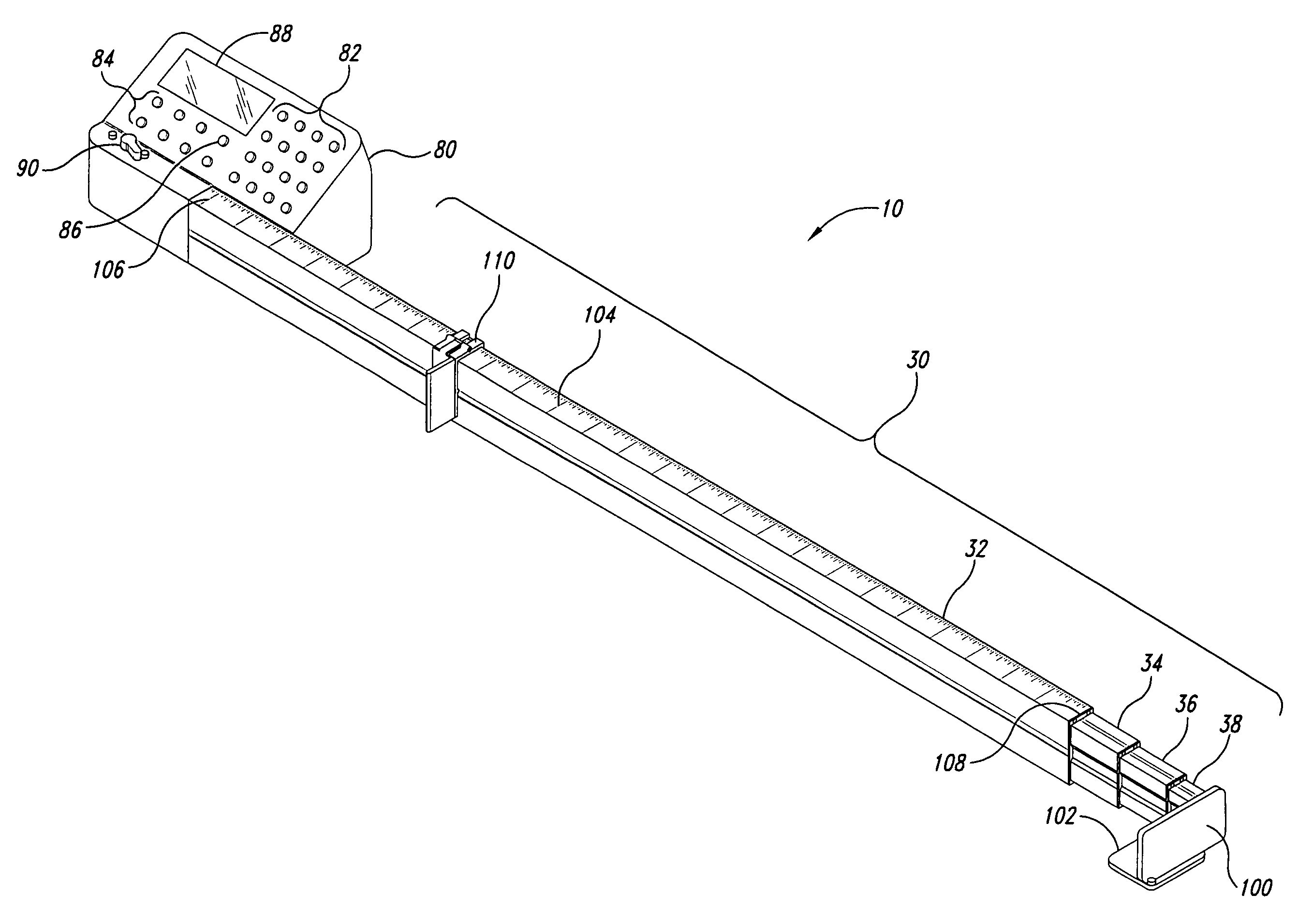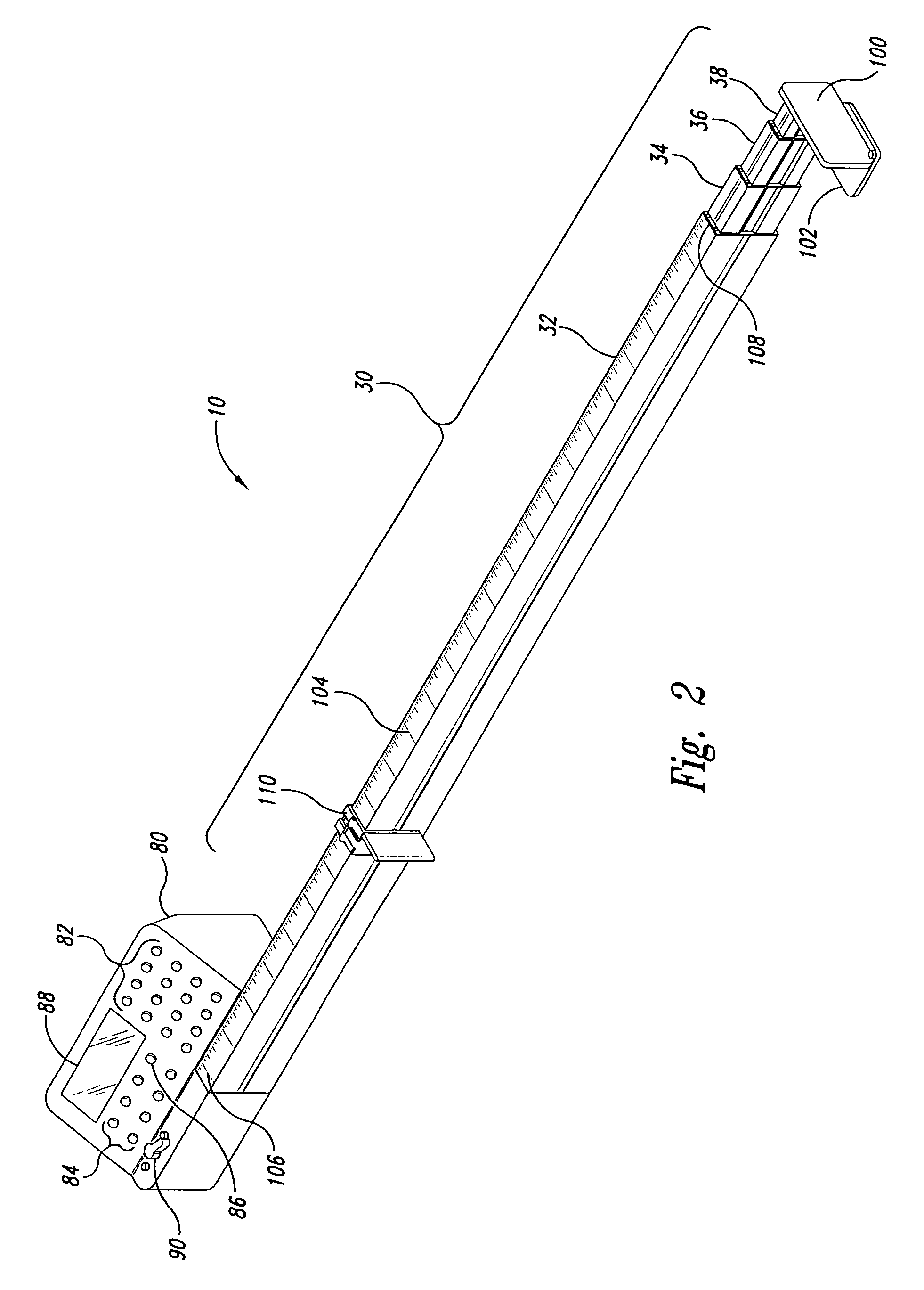Repetitive fence for cross-cutting materials
a cross-cutting material and fence technology, applied in the field of repetitive fences, can solve the problems of increasing the number of adjustments, exacerbated disadvantages, and inability to provide such automated mechanisms in a cost-effective manner for homeowners utilizing woodworking tools such as table saws, sliding radial arm saws, etc., and achieve the effect of reducing the number of adjustments
- Summary
- Abstract
- Description
- Claims
- Application Information
AI Technical Summary
Benefits of technology
Problems solved by technology
Method used
Image
Examples
Embodiment Construction
[0020]A first embodiment of a repetitive fence for cross-cutting materials, such as lumber in accordance with the principals of the invention is generally indicated at reference 10 in FIGS. 1 and 2 wherein numbered elements in the figures correspond to like numbered elements herein. FIG. 1 shows the invention in use in a typical home workshop environment in connection with a work bench 12 having an in-feed table 14, and a spaced apart out-feed table 16. A circular chop saw 20 having a motor driven rotatable blade 22 is positioned between the tables 14, 16. The saw 20 is illustrated by way of example only so as to represent a cross-cutting saw which may be of a variety of types including circular table saws, radial arm saws, miter saws (compound, sliding) chop saws (rotary, band, reciprocating) or any other type of cutting or milling device which may work against the long dimension of a work piece, such as standard dimension lumber. The repetitive fence 10 permits a user (not shown) ...
PUM
| Property | Measurement | Unit |
|---|---|---|
| distance | aaaaa | aaaaa |
| length | aaaaa | aaaaa |
| length | aaaaa | aaaaa |
Abstract
Description
Claims
Application Information
 Login to View More
Login to View More - R&D
- Intellectual Property
- Life Sciences
- Materials
- Tech Scout
- Unparalleled Data Quality
- Higher Quality Content
- 60% Fewer Hallucinations
Browse by: Latest US Patents, China's latest patents, Technical Efficacy Thesaurus, Application Domain, Technology Topic, Popular Technical Reports.
© 2025 PatSnap. All rights reserved.Legal|Privacy policy|Modern Slavery Act Transparency Statement|Sitemap|About US| Contact US: help@patsnap.com



